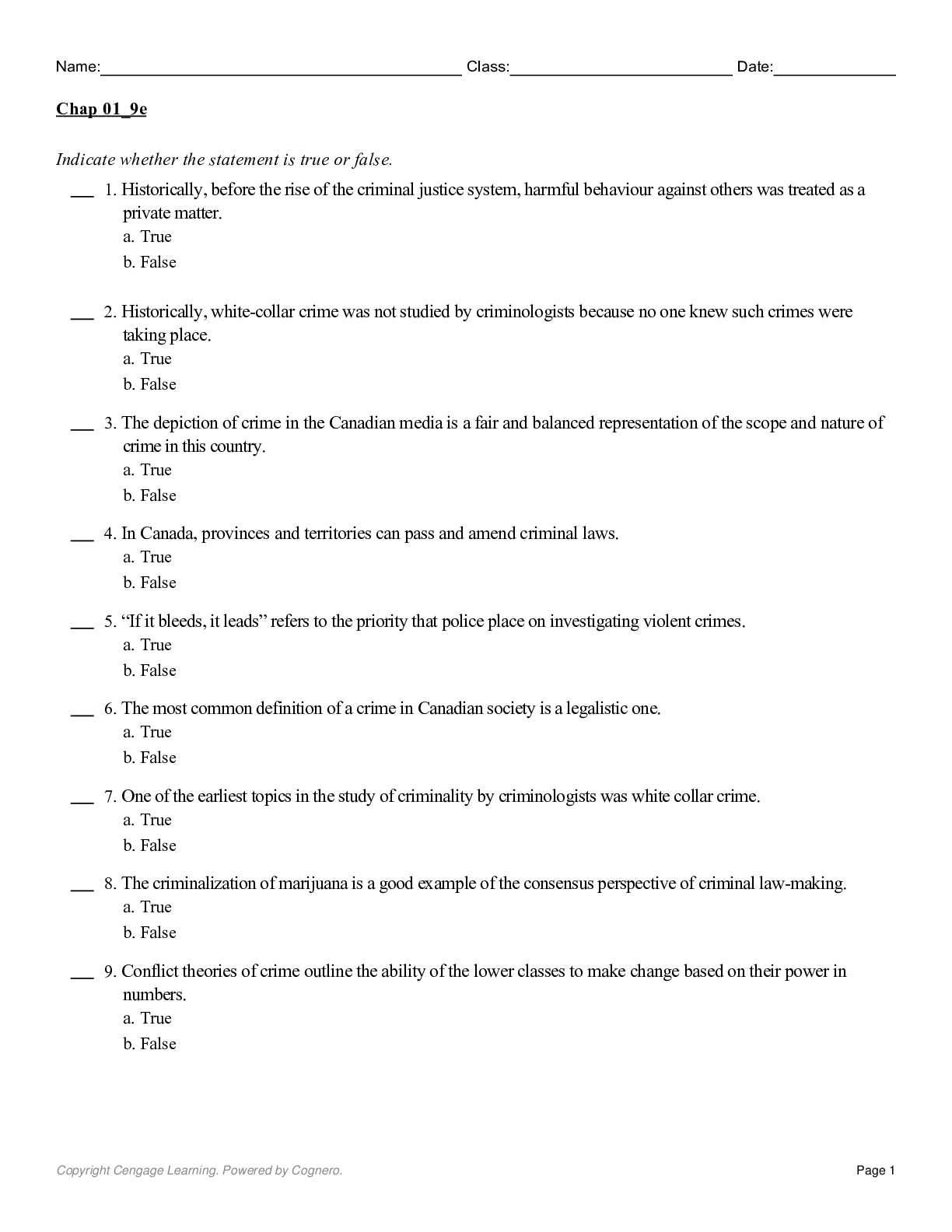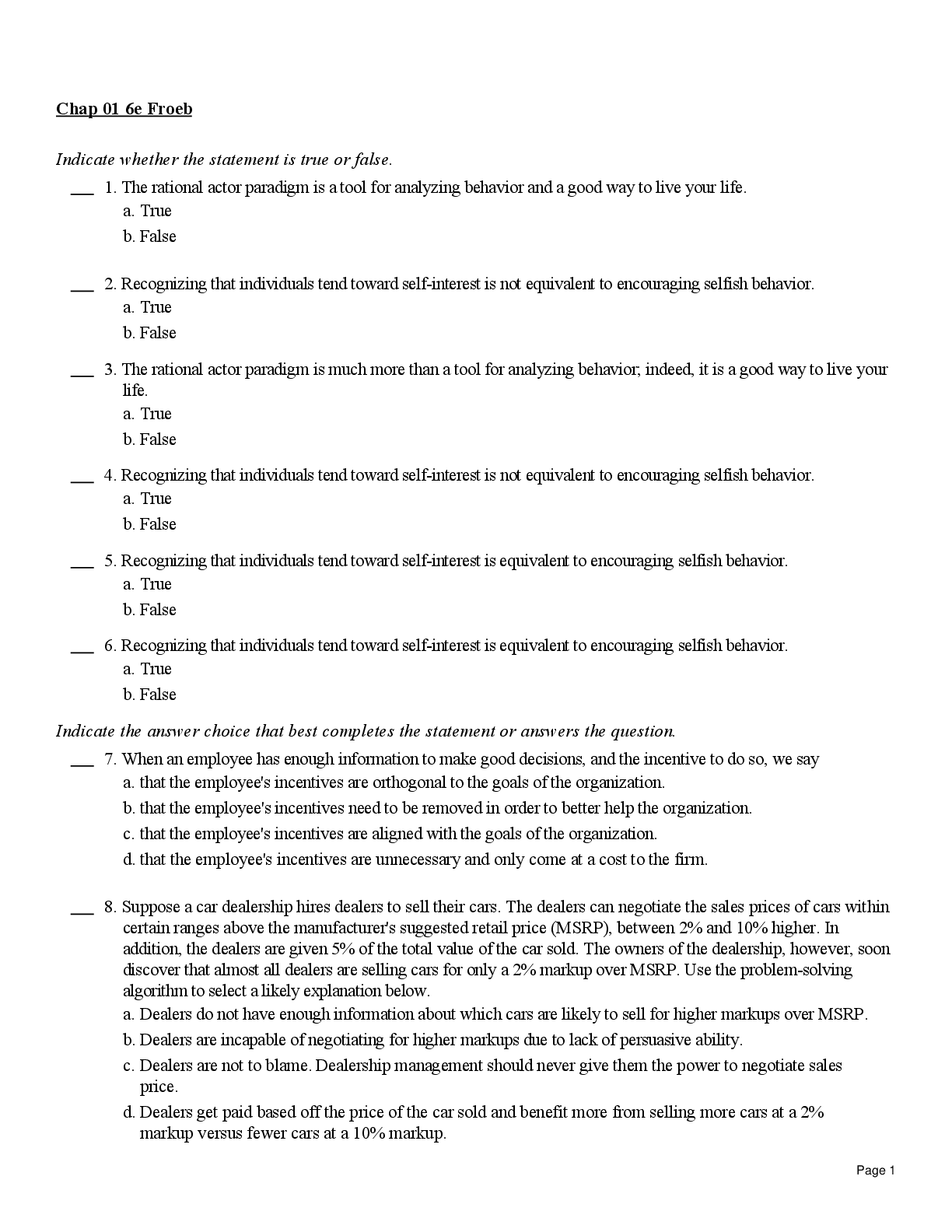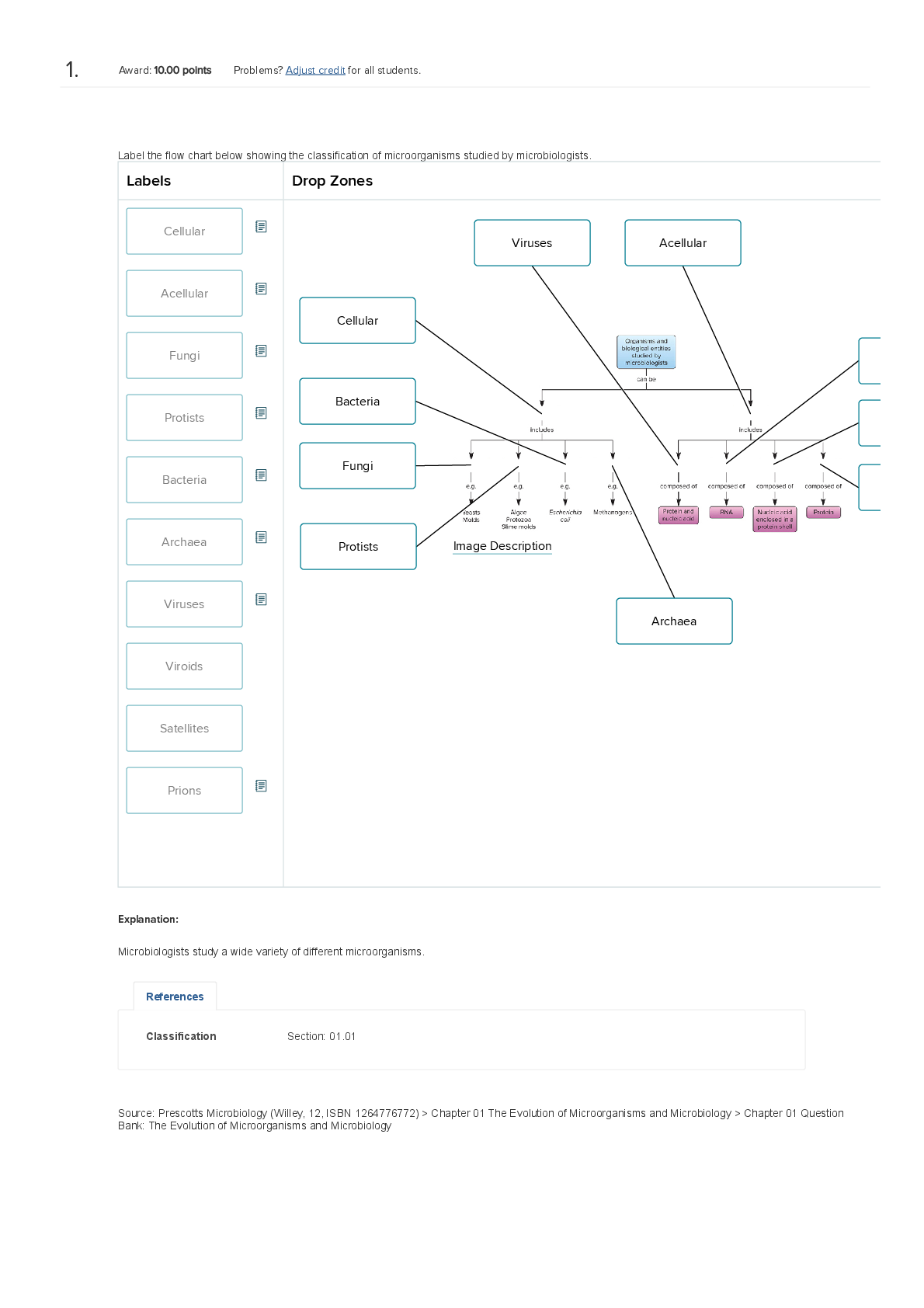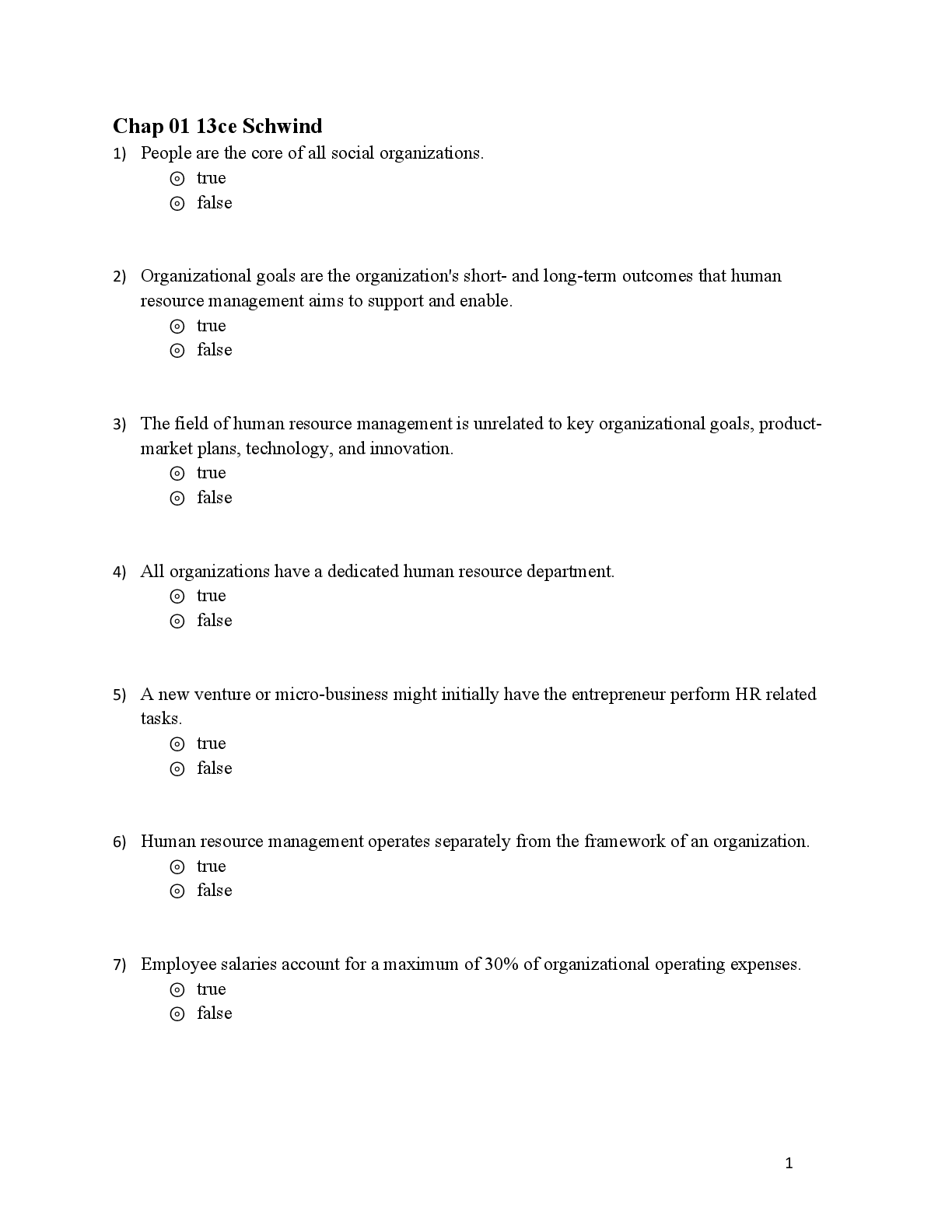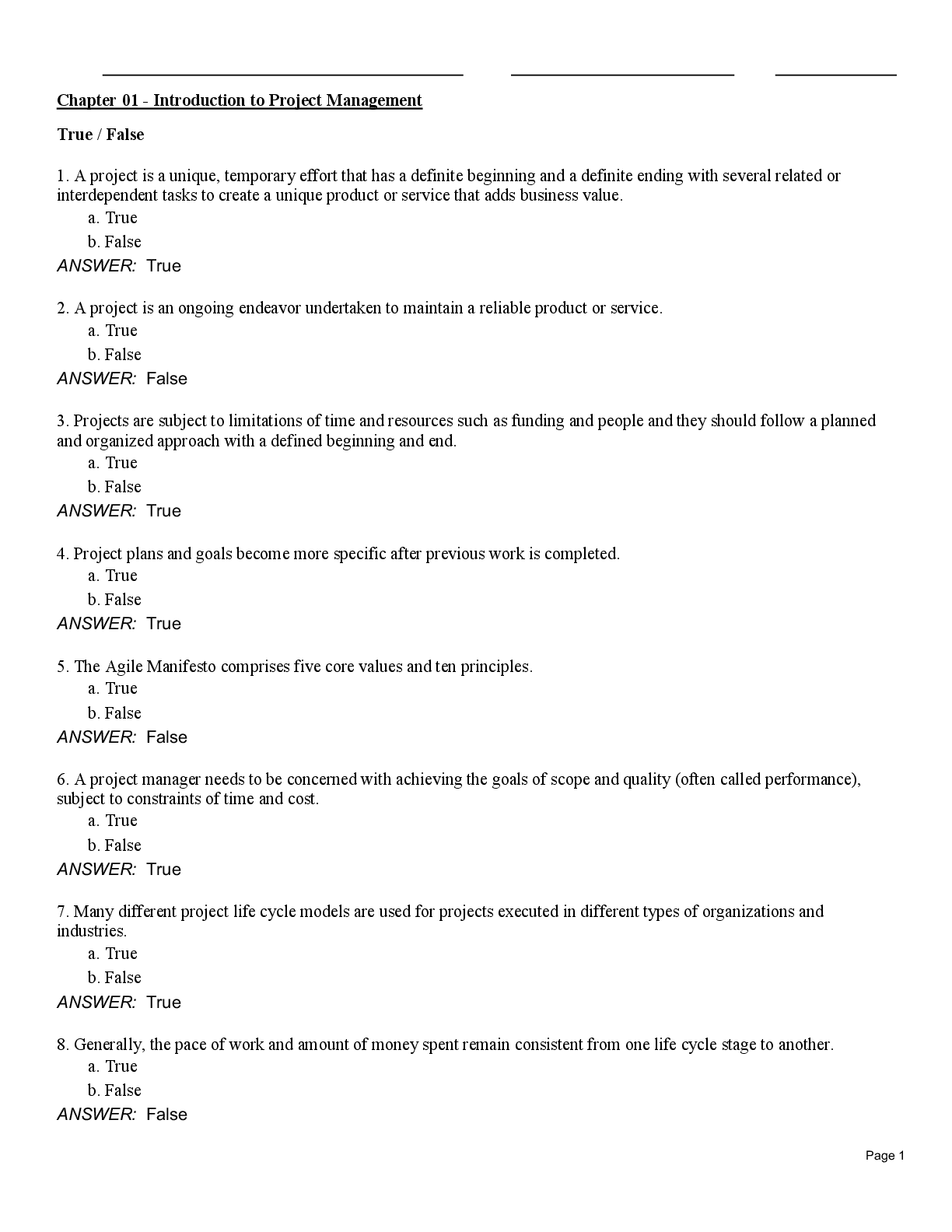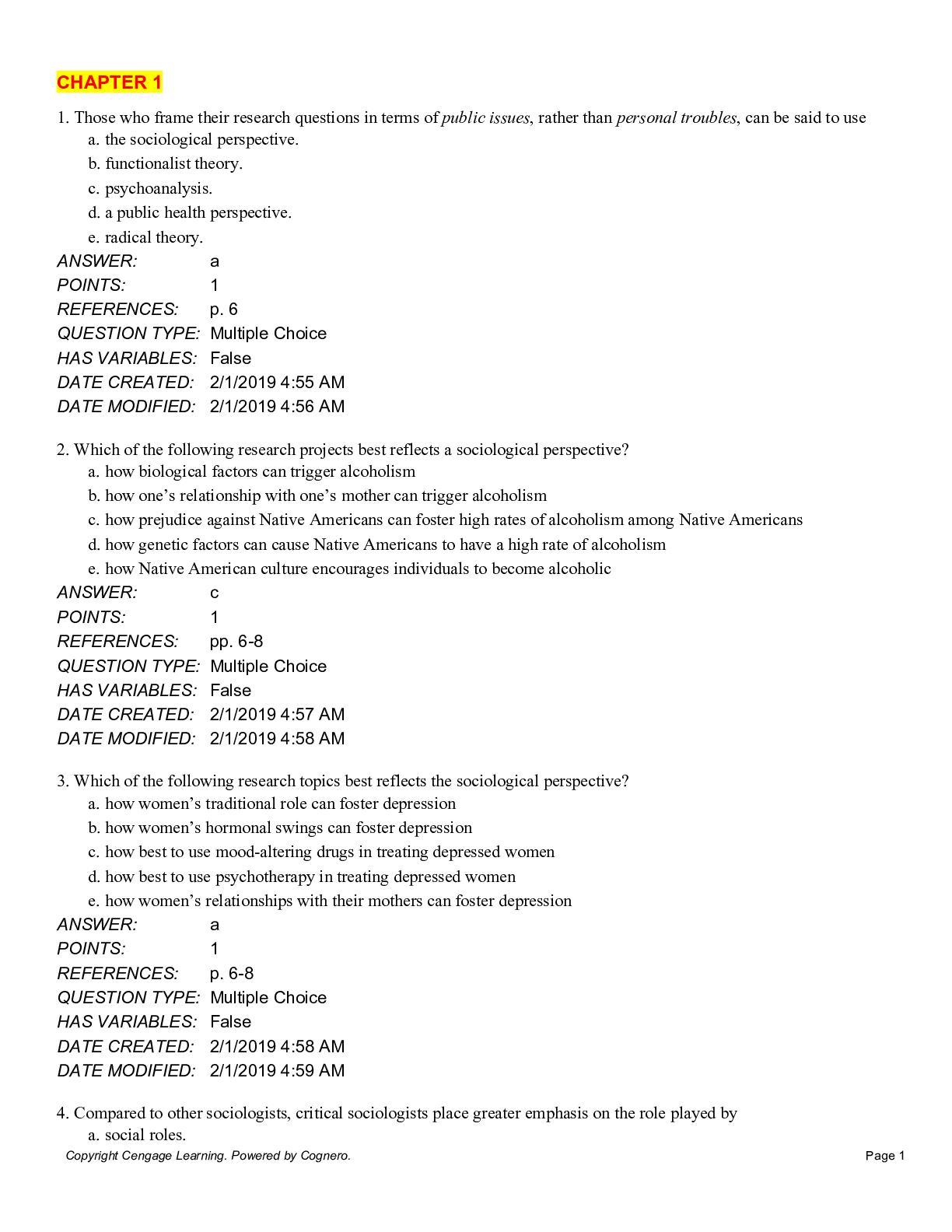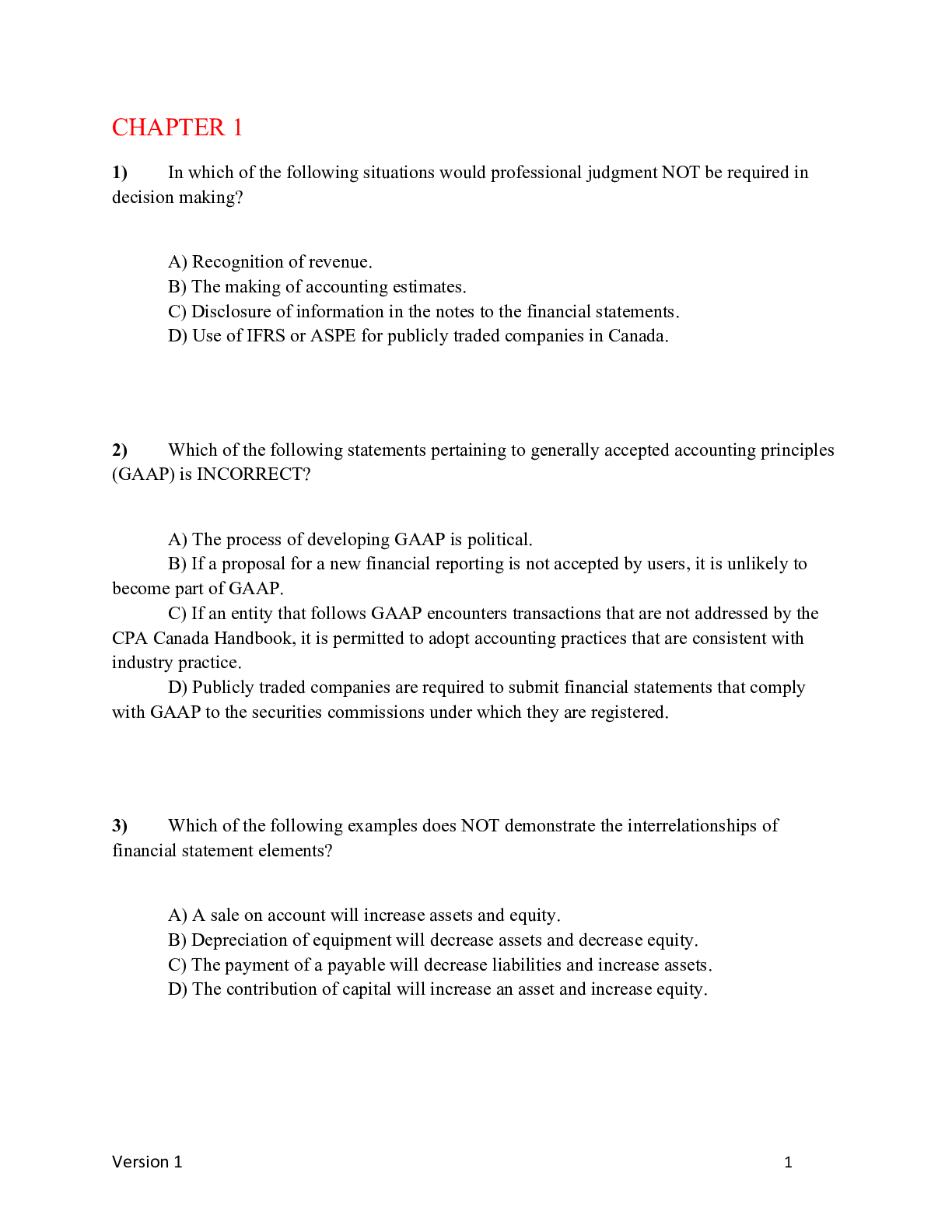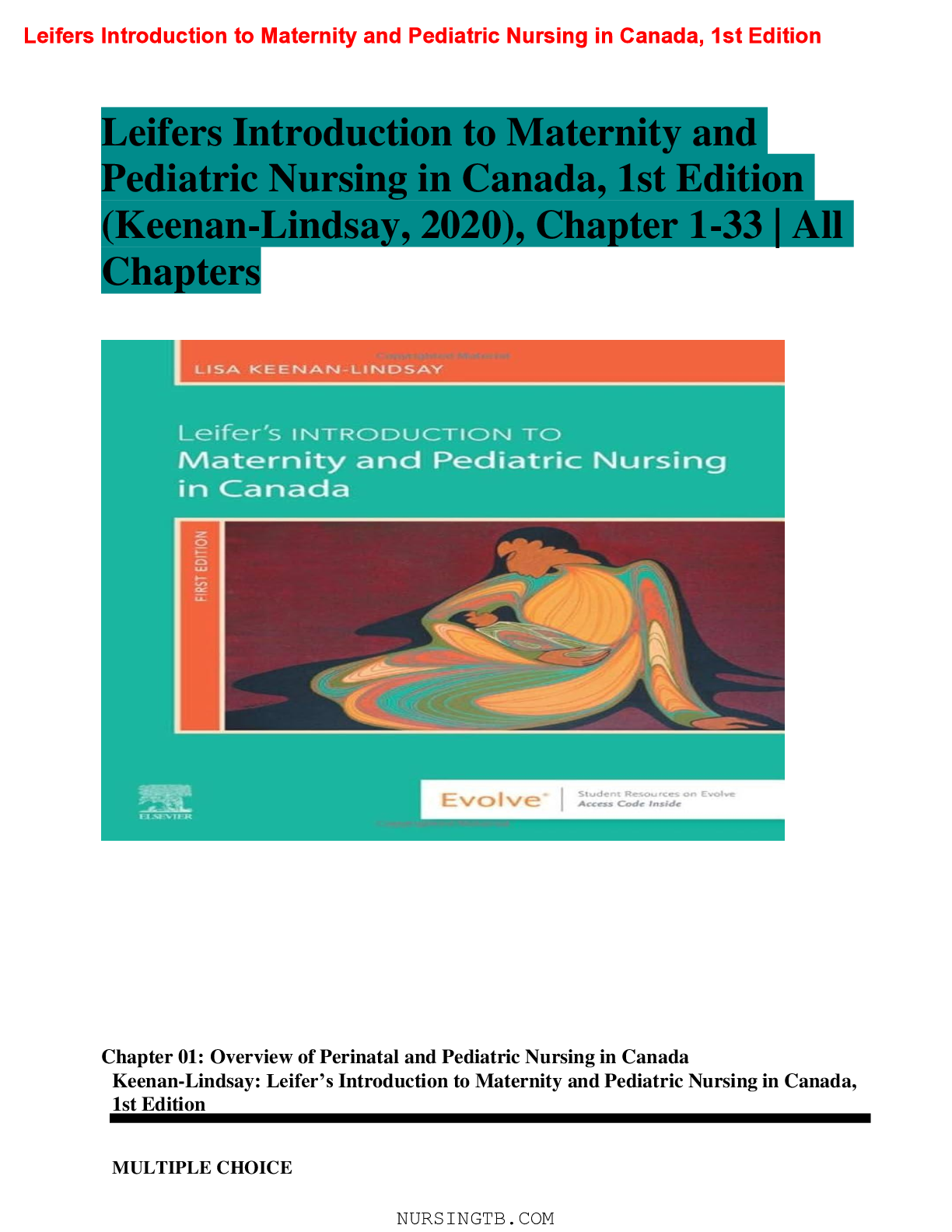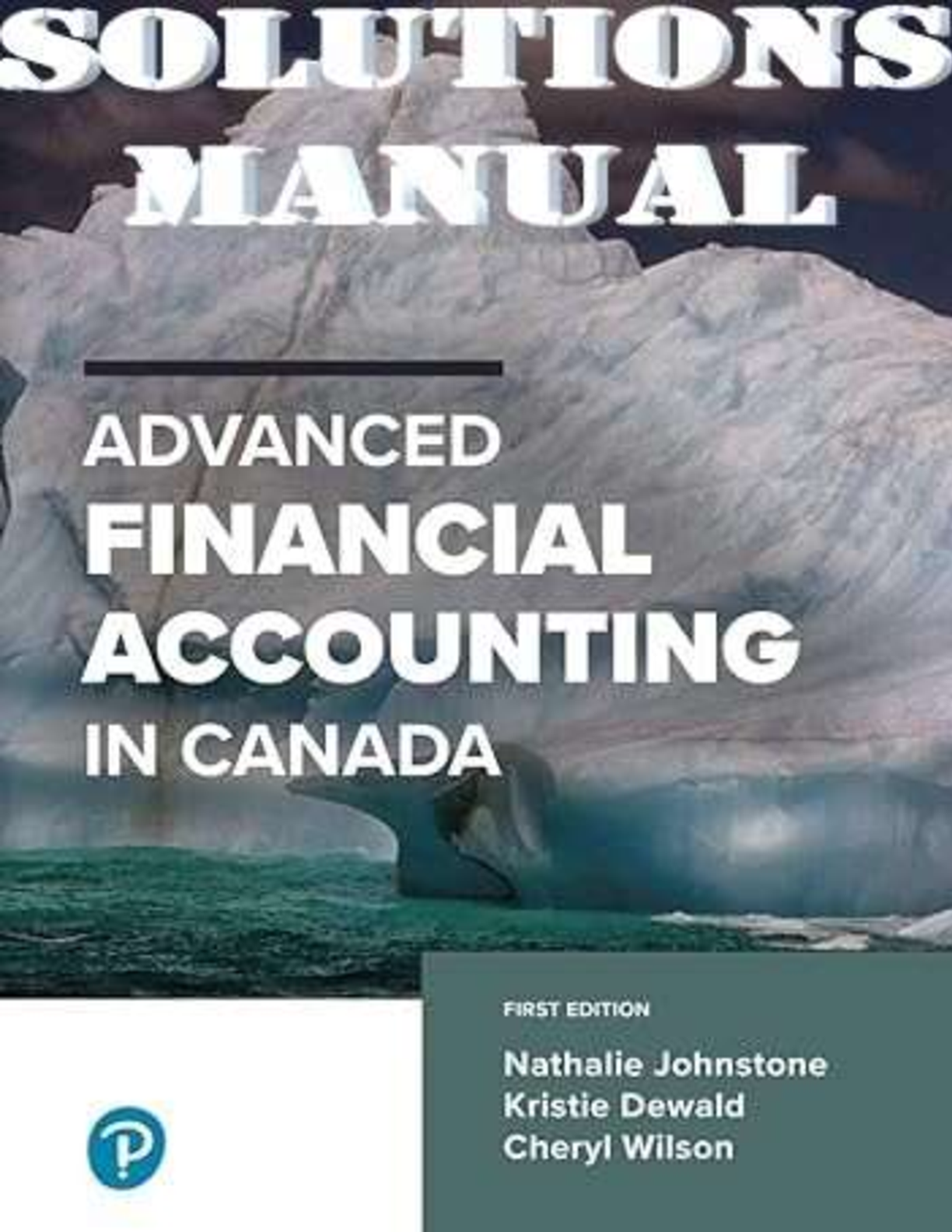Financial Accounting > TEST BANKS > Advanced Accounting in Canada, 1st edition by Johnstone and Dewald | TEST BANK (All)
Advanced Accounting in Canada, 1st edition by Johnstone and Dewald | TEST BANK
Document Content and Description Below
Test Bank for Advanced Accounting in Canada, 1st Canadian Edition, 1ce by Nathalie Johnstone TEST BANK ISBN-13: 9781259654695 Full chapters included CHAPTER 1 Conceptual and Case Analysis Frame... works for Financial Reporting LEARNING OBJECTIVES INTRODUCTION The Conceptual Framework for Financial Reporting Professional Judgment Accounting Standards in Canada Analysis and Interpretation of Financial Statements SUMMARY SELF-STUDY PROBLEM 1 APPENDIX 1A: A GENERIC APPROACH TO CASE ANALYSIS SELF-STUDY CASE 1 REVIEW QUESTIONS CASES PROBLEMS CHAPTER 2 Investments in Equity Securities LEARNING OBJECTIVES INTRODUCTION Equity Investments—The Big Picture Investments Measured at Fair Value Investments Not Measured at Fair Value Cost Method of Reporting an Equity Investment Equity Method of Reporting an Investment in an Associate Illustration of Equity Method Basics Complexities Associated with the Equity Method Analysis and Interpretation of Financial Statements SUMMARY SELF-STUDY PROBLEM 1 SELF-STUDY PROBLEM 2 REVIEW QUESTIONS CASES PROBLEMS CHAPTER 3 Business Combinations LEARNING OBJECTIVES INTRODUCTION Business Combinations Forms of Business Combinations Accounting for Business Combinations under the Acquisition Method Control through Purchase of Net Assets Consolidated Financial Statements Control through Purchase of Shares Analysis and Interpretation of Financial Statements SUMMARY SELF-STUDY PROBLEM 1 SELF-STUDY PROBLEM 2 APPENDIX 3A: REVERSE TAKEOVERS REVIEW QUESTIONS CASES PROBLEMS CHAPTER 4 Consolidation of Non–Wholly Owned Subsidiaries LEARNING OBJECTIVES INTRODUCTION Non–Wholly Owned Subsidiaries Consolidation Methods Fair Value Enterprise (FVE) Method Identifiable Net Assets Method Bargain Purchases Contingent Consideration Analysis and Interpretation of Financial Statements SUMMARY SELF-STUDY PROBLEM 1 SELF-STUDY PROBLEM 2 APPENDIX 4A: WORKING PAPER APPROACH FORCONSOLIDATION OF NON–WHOLLY OWNED SUBSIDIARIES REVIEW QUESTIONS CASES PROBLEMS CHAPTER 5 Consolidation Subsequent to Acquisition Date LEARNING OBJECTIVES INTRODUCTION Methods of Accounting for An Investment in a Subsidiary Consolidated Income and Retained Earnings Statements Testing Goodwill and Other Assets for Impairment Property, Plant, Equipment, and Intangible Assets with Definite Useful Lives Intangible Assets with Indefinite Useful Lives Cash-Generating Units and Goodwill Reversing an Impairment Loss Disclosure Requirements Consolidation of a 100%-Owned Subsidiary Consolidated Statements, End of Year 5 Consolidated Statements, End of Year 6 Consolidation of an 80%-Owned Subsidiary—Direct Approach Consolidated Statements, End of Year 5 Consolidated Statements, End of Year 6 Identifiable Net Assets Method Acquisition Differential Assigned to Liabilities Intercompany Receivables and Payables Subsidiary Acquired during the Year Equity Method of Recording Analysis and Interpretation of Financial Statements SUMMARY SELF-STUDY PROBLEM 1 SELF-STUDY PROBLEM 2 APPENDIX 5A: GOODWILL IMPAIRMENT APPENDIX 5B: WORKING PAPER APPROACHFOR CONSOLIDATIONS SUBSEQUENT TO ACQUISITION REVIEW QUESTIONS CASES PROBLEMS CHAPTER 6 Intercompany Inventory and Land Profits LEARNING OBJECTIVES INTRODUCTION Intercompany Revenue and Expenses Intercompany Sales and Purchases Other Examples of Intercompany Revenue and Expenses Intercompany Profits in Assets Intercompany Inventory Profits: Subsidiary Selling (Upstream Transactions) Intercompany Inventory Profits: Parent Selling (Downstream Transactions) Losses on Intercompany Transactions Intercompany Land Profit Holdback Realization of Intercompany Land Profits Intercompany Transfer Pricing Analysis and Interpretation of Financial Statements SUMMARY SELF-STUDY PROBLEM 1 SELF-STUDY PROBLEM 2 REVIEW QUESTIONS CASES PROBLEMS CHAPTER 7 (A) Intercompany Profits in Depreciable Assets (B) Intercompany Bondholdings LEARNING OBJECTIVES INTRODUCTION (A) Intercompany Profits in Depreciable Assets Holdback and Realization—Year 4 Equity Method Journal Entries Analysis and Interpretation of Financial Statements Realization of Remaining Gain—Years 5 and 6 Comparison of Realization of Inventory and Equipment Profits over a Three-Year Period (B) Intercompany Bondholdings Intercompany Bondholdings—No Gain or Loss Intercompany Bondholdings—with Gain or Loss Calculation of the Portion of the Gain Allocated to the Affiliates Accounting for Gain in Subsequent Years Less Than 100% Purchase of Affiliate's Bonds Effective-Yield Method of Amortization SUMMARY SELF-STUDY PROBLEM 1 SELF-STUDY PROBLEM 2 REVIEW QUESTIONS CASES PROBLEMS CHAPTER 8 Consolidated Cash Flows and Changes in Ownership LEARNING OBJECTIVES INTRODUCTION Consolidated Cash Flow Statement Preparing the Consolidated Cash Flow Statement Changes in Parent's Ownership Interest Block Acquisitions of Subsidiary (Step Purchases) Parent Sells Some of Its Holdings in Subsidiary Sale with Loss of Control Subsidiary Issues Additional Shares to Public Subsidiary with Preferred Shares Outstanding Illustration—Preferred Shareholdings Other Types of Preferred Shares Subsidiary Preferred Shares Owned by Parent Indirect Shareholdings Analysis and Interpretation of Financial Statements SUMMARY SELF-STUDY PROBLEM 1 SELF-STUDY PROBLEM 2 REVIEW QUESTIONS CASES PROBLEMS CHAPTER 9 Other Consolidation Reporting Issues LEARNING OBJECTIVES INTRODUCTION Special-Purpose Entities Joint Arrangements Accounting for Joint Operations Accounting for an Interest in a Joint Venture Contributions to the Joint Venture Deferred Income Taxes and Business Combinations Deferred Income Tax Concepts Business Combination Examples Operating Loss Carry-Forwards Segment Disclosures IFRS 8: Operating Segments Identification of Reportable Operating Segments Analysis and Interpretation of Financial Statements SUMMARY SELF-STUDY PROBLEM 1 SELF-STUDY PROBLEM 2 REVIEW QUESTIONS CASES PROBLEMS CHAPTER 10 Foreign Currency Transactions LEARNING OBJECTIVES INTRODUCTION Currency Exchange Rates Accounting for Foreign Currency Transactions Import/Export Transactions Denominated in Foreign Currency Transaction Gains and Losses from Non-current Monetary Items Speculative Forward Exchange Contracts Hedges Hedging a Recognized Monetary Item Hedging an Unrecognized Firm Commitment Hedging a Highly Probable Forecasted Transaction Analysis and Interpretation of Financial Statements SUMMARY SELF-STUDY PROBLEM 1 SELF-STUDY PROBLEM 2 APPENDIX 10A: DETERMINING THE FAIR VALUE OF FORWARD EXCHANGE CONTRACTS REVIEW QUESTIONS CASES PROBLEMS CHAPTER 11 Translation and Consolidation of Foreign Operations LEARNING OBJECTIVES INTRODUCTION Accounting Exposure versus Economic Exposure Translation of Foreign Operations The Functional Currency Translation Method The Presentation Currency Translation Method Comparative Observations of the Two Translation Methods Consolidation of Foreign Operations Consolidation of Functional Currency Translated Statements Consolidation of Presentation Currency Translated Statements Complications with an Acquisition Differential Other Considerations Analysis and Interpretation of Financial Statements SUMMARY SELF-STUDY PROBLEM 1 SELF-STUDY PROBLEM 2 APPENDIX 11A: TRANSLATION IN HIGHLY INFLATIONARY ECONOMIES SUMMARY REVIEW QUESTIONS CASES PROBLEMS CHAPTER 12 Accounting for Not-for-Profit and Public Sector Organizations LEARNING OBJECTIVES INTRODUCTION Not-for-Profit Reporting Today The Basics of Fund Accounting Accounting for Contributions The Restricted Fund Method The Deferral Method Donated Capital Assets, Materials, and Services Analysis and Interpretation of Financial Statements [Show More]
Last updated: 8 months ago
Preview 10 out of 307 pages

Loading document previews ...
Buy this document to get the full access instantly
Instant Download Access after purchase
Buy NowInstant download
We Accept:

Reviews( 0 )
$26.00
Can't find what you want? Try our AI powered Search
Document information
Connected school, study & course
About the document
Uploaded On
Oct 10, 2022
Number of pages
307
Written in
Additional information
This document has been written for:
Uploaded
Oct 10, 2022
Downloads
0
Views
268

